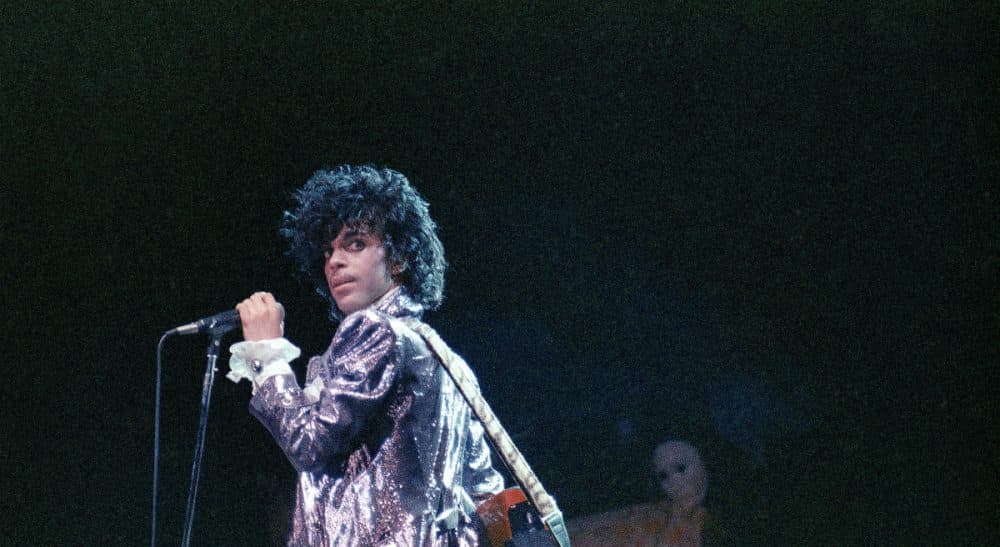Advertisement
The Vast And Glittering World Inside Him: Remembering Prince

You know how there are some songs you inhale? Songs that shoot you to the surface and fill your aching lungs with air when you’ve been under water too long?
That’s what Prince’s “Let’s go Crazy” did for me.
It was 1984 and I was working at my first corporate job, as an instructional designer. My desk was in a cube, second-to-last in a dark aisle lined with cubes, one of dozens of aisles in a building that was just one of many buildings on a high tech campus in Nashua, New Hampshire. I spent each day in this dim crypt moving a blinking orange cursor across a computer terminal screen, writing words intended to codify creative human pursuits, to reduce them to a sequential set of numbered activities that one could drill, practice and be tested on.
In that awful, soul-sucking year, Prince’s music animated me from within.
Electric word, life
he’d sing — chant, really — and I’d sit up straight.
And if the elevator tries to bring you down
Go crazy, punch a higher floor.
That wasn’t the first time his jittery musicality had lifted me out of bleak times. I’d started listening to Prince a few years earlier when Ronald Reagan won the presidency and proved that the 1960s were definitively, seemingly irretrievably over. But listening to “1999” in 1982 gave me hope. Its dark lyrics against a joyful beat contained the right kind of chaos, skipping over the glassy eyed, self-congratulatory complacency of those years, skittering back and ahead to a time of urgency.
Though overwrought popular music came to dominate much of that decade, whether in the form of bellicose, three-chord heavy metal bands or precious “art rock,” Prince was having none of it. He defied existing genres and created new ones — psychedelic S&M, dirty lyricism, poly-rhythmic rock. When popular music was being re-segregated -- skinny English white guys over here, Valley Girls there, black crooners in that corner, and Bruce Stands Alone — Prince’s bands were integrated by sex and skin color, by acoustic and electronic instruments, by funk and jazz, united by the man’s uncanny restlessness and sophistication.
Normally we think of control and ecstasy as opposites, but in Prince, they were just the two ends of the same breath -- inhale, exhale.
Music rushed out of him, and he was far too prolific for me to keep up with. I didn’t really follow Prince, gave up on getting and memorizing every album. But every now and then one of his songs would just find me and they became my rocks rising from the cold racing river. The rhythmic heart beat and mounting heart ache of “Thieves in the Temple” was mesmerizing. I was astonished by his version of Joni Mitchell’s “A Case of You,” thrilled by how he took such an original and perfect song and made his own original and equally perfect story from it. When the mystical, religious, utopian “Rainbow Children” came out a couple of months after 9/11, it offered solace with a jazz-infused, multicultural vision of the future.
Just like the sun, the rainbow children rise
Flyin' upon the wings of the new translation
“… it’s like the Earth is missing a note,” Public Enemy frontman Chuck D tweeted upon news of Prince’s death. I understand what he means.
When I saw Prince live at the Garden, sitting alone in this vast venue with an acoustic guitar, I marveled at how he could seem so self-contained. Then he started to play. This is possible, I remember thinking, when you hold such a vast and glittering world inside you.
Normally we think of control and ecstasy as opposites, but in Prince, they were just the two ends of the same breath — inhale, exhale. We need both to live.
Editor's note: Julie's daughter, Layla, penned her own lovely and vivid remembrance of Prince. You can read it here.

